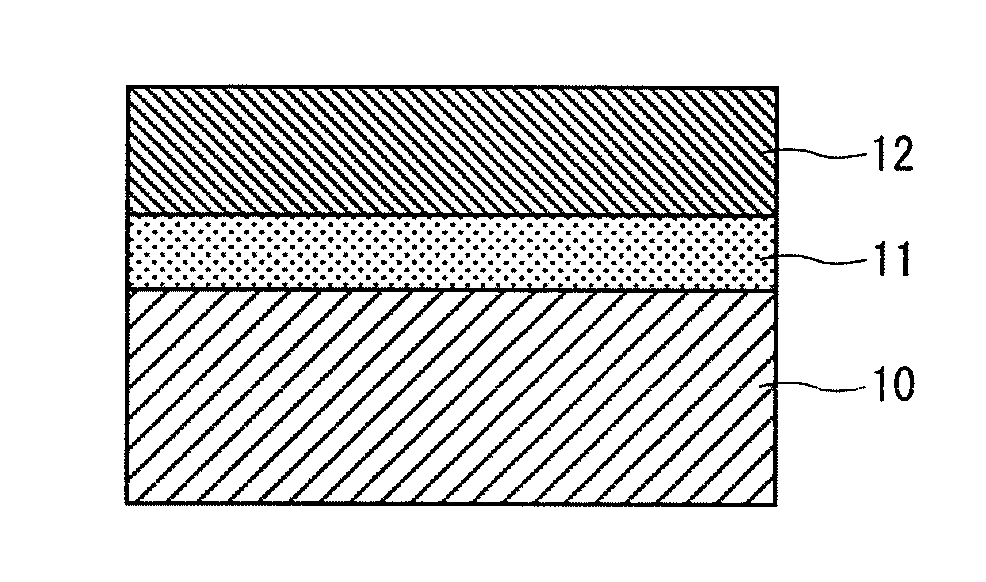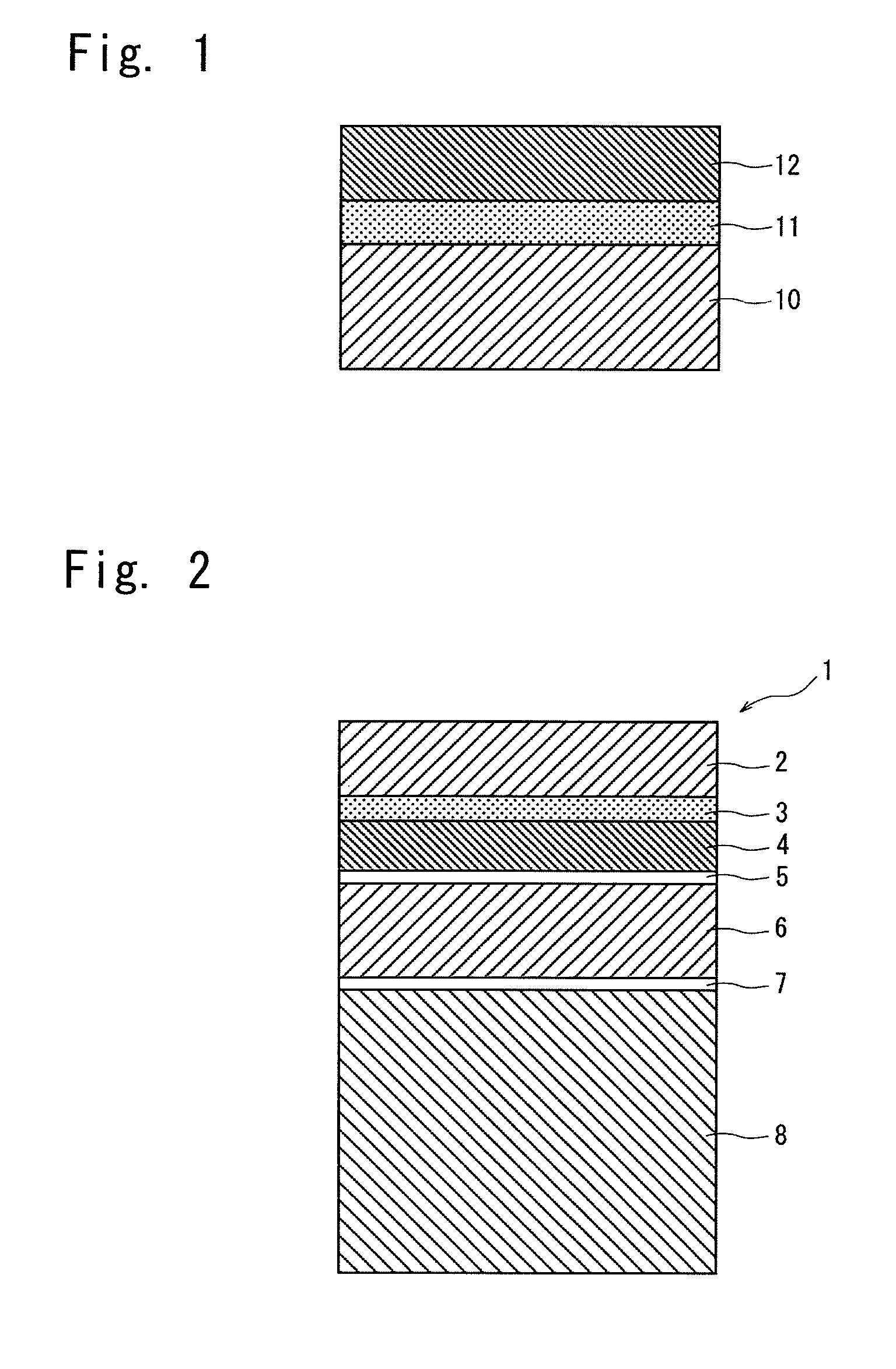Coating composition for undercoating
a technology of coating composition and undercoating, which is applied in the direction of coatings, priming paints, polyester coatings, etc., can solve the problems of poor product quality, poor performance of above gas-barrier materials, and affecting the plastic base body, etc., to achieve easy and fast feeding, high ionically crosslinked ratio, and easy formation
- Summary
- Abstract
- Description
- Claims
- Application Information
AI Technical Summary
Benefits of technology
Problems solved by technology
Method used
Image
Examples
example 1
[0092]A hundred percent by mass of a nonaqueous polyester polyol (Vylon GK570, Mn=17,000, hydroxyl value=7, Tg=0° C., manufactured by Toyobo Co., Ltd.) dissolved in an ethyl acetate / MEK mixed solvent (weight ratio of 65 / 35) and containing a metal element in the resin skeleton was blended with 250% by mass of calcium carbonate (Brilliant 1500, average primary particle size of 0.15 μm, manufactured by SHIRAISHI CALCIUM KAISHA, LTD.) so that the total solid component was 35% by mass. Thereafter, the mixture thereof was milled and dispersed by using glass beads (BZ-04 manufactured by Toshinriko Co.) to obtain a paste thereof. To the paste was added a polyisocyanate (Sumidur N3300, isocyanurate based on 1.6-hexamethylenediisocyanate, Tg=−60° C., Mn=680, manufactured by Sumika Bayer Urethane Co., Ltd.) so that the amount of polyisocyanate was 10 equivalents to the hydroxyl value of the nonaqueous polyester polyol, and to which the above mixed solvent was so added that the total solid comp...
examples 2 to 10
[0093]Coating solutions (a′) for undercoating were obtained in the same manner as in Example 1 but changing the coating composition (a) for undercoating containing the alkaline compound of the polyvalent metal in the coating solution (a′) for undercoating into the compositions of Examples 2 to 10 shown in Table 1.
examples 11 to 15
[0099]Coating solutions (a′) for undercoating were obtained in the same manner as in Example 1 but changing the composition of the isocyanate type curing agent in the coating solution (a′) as shown in Table 2.
[0100]In Table 2, the Sumidur HT was a straight-chain aliphatic polyisocyanate (adduct type based on 1,6-hexamethylenediisocyanate, solid content of 75% by mass, Tg=−50° C., Mn=950, manufactured by Sumika Bayer Urethane Co.), and the Desmodur Z4470 was an alicyclic polyisocyanate (isocyanurate type based on the isophoronediisocyanate, dissolved in butyl acetate, solid content of 70% by mass, Tg=70° C., Mn=1200, manufactured by Sumika Bayer Urethane Co., Ltd.).
(Preparation of the Polycarboxylic Acid Type Polymer-Containing Solution)
[0101]A polycarboxylic acid type polymer-containing solution (b) was obtained by using a polyacrylic acid (AC-10LHP manufactured by Nihon Junyaku Co.) as the polycarboxylic acid type polymer, and dissolving it in a water / acetone mixed solvent (weight ...
PUM
| Property | Measurement | Unit |
|---|---|---|
| average primary particle size | aaaaa | aaaaa |
| Tg | aaaaa | aaaaa |
| Tg | aaaaa | aaaaa |
Abstract
Description
Claims
Application Information
 Login to View More
Login to View More - Generate Ideas
- Intellectual Property
- Life Sciences
- Materials
- Tech Scout
- Unparalleled Data Quality
- Higher Quality Content
- 60% Fewer Hallucinations
Browse by: Latest US Patents, China's latest patents, Technical Efficacy Thesaurus, Application Domain, Technology Topic, Popular Technical Reports.
© 2025 PatSnap. All rights reserved.Legal|Privacy policy|Modern Slavery Act Transparency Statement|Sitemap|About US| Contact US: help@patsnap.com


